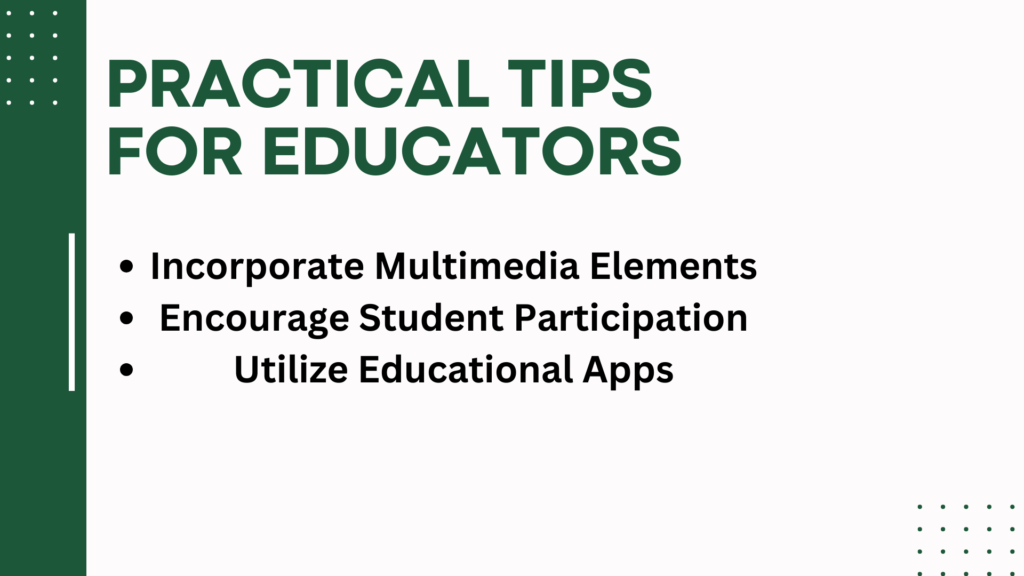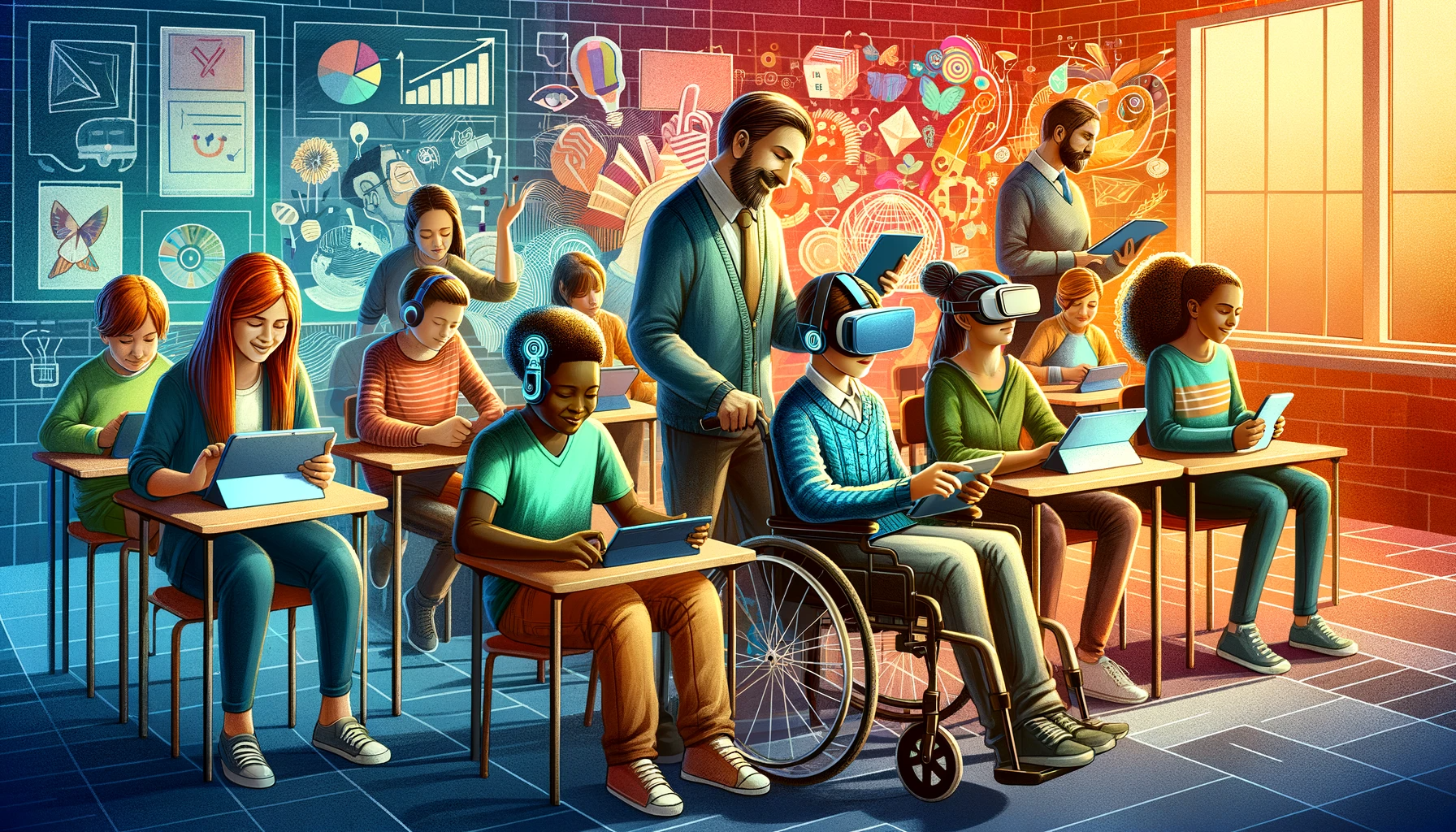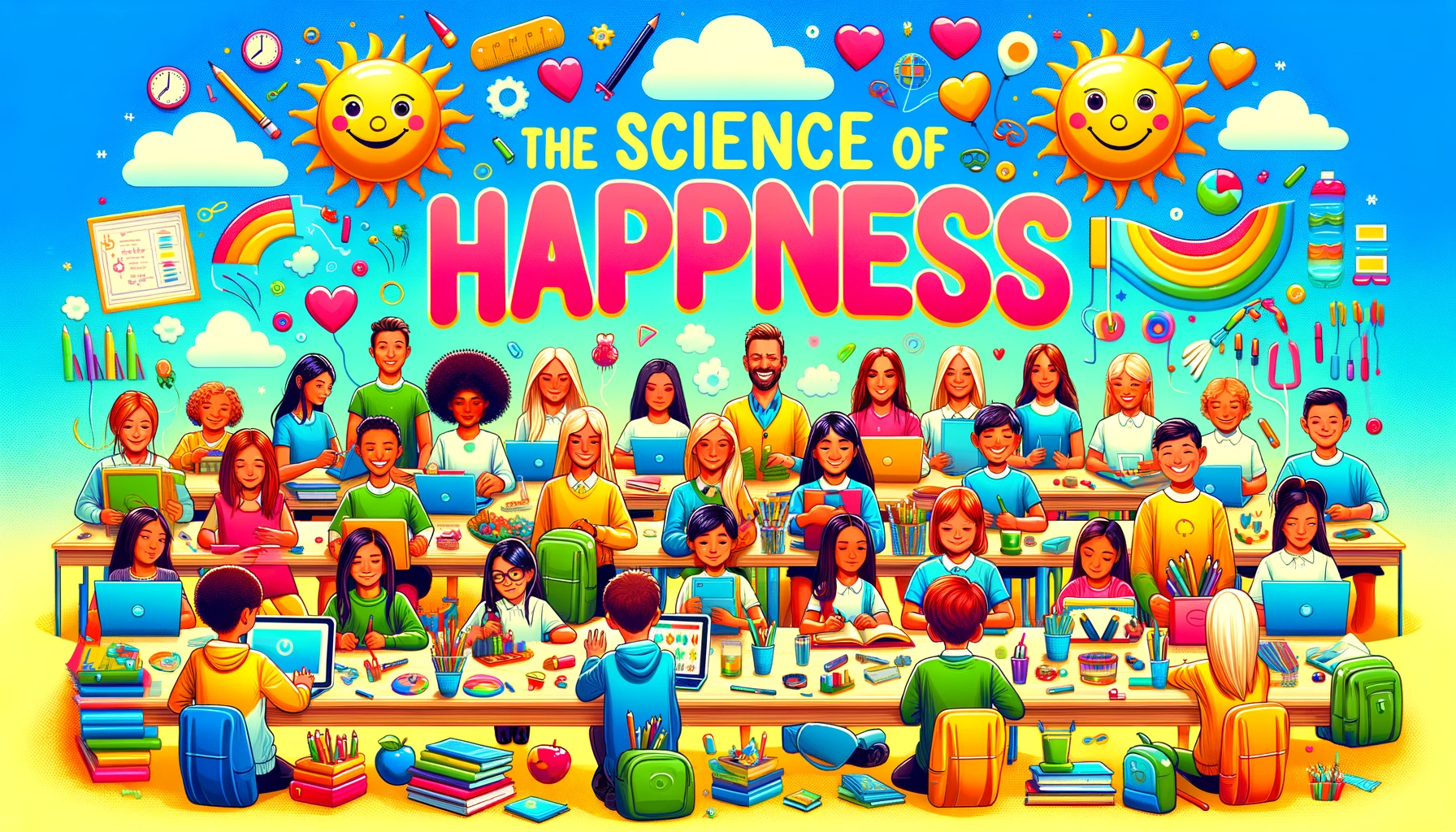
In the ever-evolving landscape of education, the integration of technology has emerged as a pivotal force, reshaping traditional pedagogy and ushering in a new era of learning. This article delves into the significance of classroom technology integration, exploring its multifaceted impact on modern education.
In sync with the 21st-century education paradigm, the infusion of edtech solutions has become a catalyst for change. The rapid adoption of digital learning tools, such as interactive whiteboards and educational apps, signifies a shift towards tech-enabled teaching methods.
The phrase classroom technology integration encapsulates the essence of a modern classroom. From fostering student engagement to enabling blended learning, the integration of technology is a cornerstone in creating an environment that aligns with the needs of tech-savvy learners.
Effective Ways to Integrate Technology in the Classroom
In the dynamic realm of education, successful tech integration is imperative. The term ‘classroom technology integration’ encapsulates the holistic approach we explore in this piece, drawing insights from edtech solutions, digital learning, and interactive teaching.
Blended Learning: A Catalyst for Student Outcomes
One of the most effective ways to integrate technology in the classroom is through blended learning. This approach seamlessly combines traditional teaching methods with digital tools, optimizing learning experiences and positively impacting student outcomes.
Learning Management Systems (LMS): Digital Resource Organization
A pivotal player in successful tech integration is the use of Learning Management Systems (LMS). These systems act as the organizational backbone, efficiently managing digital resources and ensuring seamless access for both educators and students.
Strategies for Successful Tech Integration in Schools
The heart of our discussion revolves around actionable strategies for successful tech integration in schools. Drawing on insights from 21st-century education, we delve into innovative teaching methods, the role of educational software, and the integration of online learning resources.
To truly understand the effectiveness of tech integration, it’s crucial to evaluate its impact on education. Through practical insights and real-world examples, we analyze how technology enhances student engagement, fosters digital literacy skills, and contributes to the modern classroom.
Best EdTech Tools for Teachers
Embracing the digital age, classroom technology integration has become a cornerstone in modern education. In this section review, we delve into the best EdTech tools for teachers, exploring their impact on student engagement, blended learning, and the overall dynamics of the modern classroom.
Criteria for Selecting Effective EdTech Tools
Educators seeking the best EdTech tools should align their choices with specific criteria based on educational objectives. This section outlines the evaluation criteria, ensuring that the tools chosen are not just technologically advanced but also seamlessly integrated into pedagogical practices.
Real-World Success: Implementing EdTech Tools in Classrooms
To provide tangible value, this segment shares real-world examples of successful EdTech tool implementation. From interactive teaching platforms to adaptive learning resources, these stories showcase the transformative power of carefully selected EdTech tools in diverse educational settings.
Best EdTech Tools for Teachers: A Closer Look
- Interactive Whiteboards: Bridging the Physical and Digital
- Overview: Interactive whiteboards stand as a beacon for interactive teaching. They foster engagement, allowing teachers to seamlessly integrate multimedia elements into their lessons.
- Real-World Impact: Teachers report heightened student participation and comprehension through dynamic, visual learning experiences.
- Learning Management Systems (LMS): Organizing the Digital Classroom
- Overview: LMS platforms streamline content delivery and student collaboration. They serve as a centralized hub for organizing online learning resources.
- Real-World Impact: Educators note improved efficiency in managing assignments, tracking student progress, and facilitating communication within a digital learning environment.
- Educational Apps: Personalized Learning at Your Fingertips
- Overview: A plethora of educational apps cater to diverse subjects and learning styles. These apps provide personalized learning experiences for students.
- Real-World Impact: Teachers witness increased student engagement and understanding as they tailor lessons to individual needs.
Optimizing Digital Learning Experiences
Classroom technology integration stands as the linchpin in the evolution of education. In this section, we dissect how leveraging edtech solutions, digital learning tools, and innovative teaching methods contributes to optimizing digital learning experiences in the modern classroom.
Adaptive Learning: Tailoring Education for Diverse Learners
At the forefront of digital learning evolution is the concept of adaptive learning. By harnessing technology, educators can tailor lessons to meet the unique needs of each student, ensuring a personalized and effective learning journey for all.
Benefits of Adaptive Learning for Diverse Learners
- Improved Engagement:
- Harnessing adaptive learning tools enhances student engagement. Case studies reveal a significant uptick in participation and enthusiasm, especially among students who may struggle in traditional settings.
- Enhanced Understanding:
- Digital learning methods, particularly adaptive learning, facilitate a deeper understanding of concepts. Real-world examples demonstrate how students grasp complex topics at their own pace, resulting in improved academic outcomes.
Data Insights: Impact of Adaptive Learning on Student Performance
Presenting data in tables, we showcase the impact of adaptive learning on student performance. From increased test scores to reduced dropout rates, the evidence underscores the effectiveness of optimizing digital learning experiences through adaptive learning methodologies.
Strategies for Successful Tech Integration in Schools
- Effective Ways to Integrate Technology:
- Implementing adaptive learning is a key aspect of effective tech integration. This section offers practical strategies for educators to seamlessly incorporate adaptive learning tools into their classrooms.
- Best EdTech Tools for Teachers:
- Recognizing the importance of selecting the right tools, we highlight some of the best edtech tools for teachers to optimize digital learning experiences. From interactive whiteboards to educational apps, these tools are curated for immediate classroom impact.
Innovative Teaching Methods: Elevating Digital Literacy Skills
- Tech-Enhanced Learning:
- Beyond adaptive learning, this section explores the broader spectrum of tech-enhanced learning. From interactive whiteboards fostering collaborative learning to online resources cultivating digital literacy skills, these methods prepare students for the demands of the 21st century.
Implementing Smart Boards in Education
The integration of smart boards into education epitomizes the pinnacle of classroom technology integration. In this section, we dissect the seamless assimilation of smart boards, unravelling their role in interactive teaching and their transformative impact on the modern classroom.
Benefits of Smart Board Technology: Fostering Student Participation
- Enhanced Interaction:
- Smart boards redefine the learning experience by promoting interactive teaching. Students actively engage with lessons, fostering a collaborative and dynamic learning environment.
- Visual Stimulation:
- The visual appeal of smart board technology captures students’ attention. Case studies consistently report heightened focus and improved comprehension when complex concepts are presented through interactive visual aids.

Practical Tips for Educators: Maximizing the Potential of Smart Boards
- Incorporate Multimedia Elements:
- Enrich lessons by incorporating multimedia elements. Leverage the interactive features of smart boards to bring lessons to life, catering to different learning styles.
- Encourage Student Participation:
- Foster a culture of active participation. Smart boards allow students to directly engage with content, encouraging questions, discussions, and collaborative problem-solving.
- Utilize Educational Apps:
- Integrate educational apps compatible with smart boards. These apps not only enhance the learning experience but also provide valuable data for educators to track individual student progress.
Impact of Smart Boards on Student Performance
From improved retention rates to increased participation, the data underscores the transformative influence of smart board technology.
Effective Ways to Integrate Technology: Smart Boards in Focus
- Optimizing Digital Learning Experiences:
- Smart boards play a pivotal role in optimizing digital learning experiences. Their interactive nature provides a hands-on approach, contributing to enhanced understanding and knowledge retention.
- Strategies for Successful Tech Integration:
- Smart boards stand as a testament to successful tech integration. Educators can leverage their features to implement innovative teaching methods, fostering a tech-enabled education landscape.
Conclusion
As we draw the curtains on this exploration, the central theme echoes the profound impact of classroom technology integration on the landscape of modern education. This concluding segment encapsulates key insights from the world of edtech solutions, digital learning, and innovative teaching methods.
In the journey towards 21st-century education, the evolution of educational technology has been relentless. From the advent of interactive teaching methods to the integration of virtual classrooms, the modern classroom is a testament to the tech-enabled education landscape.
FAQs
What are the benefits of integrating technology in the classroom?
Integrating technology enhances student engagement, facilitates personalized learning, and prepares students for the digital age. It fosters collaboration, provides access to vast educational resources, and improves teacher efficiency in delivering content.
How can teachers effectively use edtech tools?
Teachers can effectively use edtech tools by aligning them with learning objectives, promoting interactive lessons, and incorporating diverse tools like learning management systems, interactive whiteboards, and educational apps. Ongoing professional development ensures proficiency in using these tools.
What are the challenges of implementing digital learning?
Challenges include limited access to technology, the need for teacher training, potential for unequal learning experiences, and concerns about maintaining student engagement in virtual environments.
Which educational software is best for classroom use?
Determining the best educational software depends on specific needs, but popular choices include Google Workspace for Education, Microsoft Education, and platforms like Khan Academy and Kahoot!.
How can technology improve student engagement?
Technology improves engagement through interactive lessons, gamified learning experiences, multimedia content, and collaborative online platforms. Tailoring content to students’ interests and learning styles enhances engagement.
Are there risks associated with too much screen time in the classroom?
Yes, risks include digital fatigue, potential for distraction, and concerns about sedentary behavior. Balancing screen time with offline activities is crucial for students’ well-being.
How can teachers be trained for tech integration?
Teachers can be trained through workshops, online courses, and ongoing professional development programs. Hands-on practice and mentorship facilitate effective tech integration.
What is the role of parents in supporting technology use in education?
Parents play a crucial role by fostering a positive attitude toward technology, setting screen time limits, monitoring online activities, and collaborating with teachers to support students’ tech use.
How does edtech impact diverse learners?
Edtech offers personalized learning experiences, accommodates various learning styles, and provides accessibility features, positively impacting diverse learners, including those with different abilities or language backgrounds.
What are the future trends in classroom technology?
Future trends include increased use of artificial intelligence, augmented and virtual reality, adaptive learning technologies, and the continued evolution of online collaboration tools.
How can virtual classrooms enhance the learning experience?
Virtual classrooms enhance learning through global collaboration, flexible scheduling, interactive content, and personalized feedback. They offer a dynamic and inclusive learning environment.
Is there research on the effectiveness of e-learning platforms?
Yes, numerous studies indicate the effectiveness of e-learning platforms in improving student outcomes, engagement, and accessibility to educational resources.
How to manage screen time for students in a tech-enabled classroom?
Manage screen time by setting clear guidelines, incorporating breaks, encouraging offline activities, and promoting a healthy balance between digital and non-digital activities.
Are there subject-specific edtech solutions?
Yes, subject-specific edtech solutions abound, such as Desmos for math, Duolingo for language learning, and BioMan Bioinformatics for biology.
How does technology promote digital citizenship in schools?
Technology promotes digital citizenship by teaching responsible online behavior, internet safety, critical thinking, and ethical use of digital resources. Educational programs instill a sense of digital responsibility in students.






